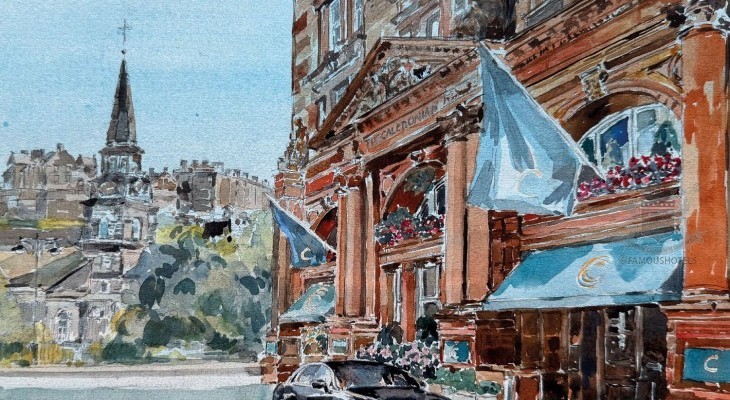

Opened in 1903, the "Caley" is a historical monument of the capital of Scotland.
The Caledonian
The 2026 edition of the Caledonian Edinburgh
At the end of Princess Street presides the Queen of Edinburgh, the 'Caley'. Lush green gardens offer a walk in the park to museums, shops and the old castle district on the hill. After checking-in at the Waldorf Astoria Edinburgh – The Caledonian, I take a moment to enjoy the marvellous view over the valley across Princes Street Gardens; the old city to the right, the new city to the left. Through my window, in room 236, I can see the castle.
I quickly sneak out of the ‘Caley’, as the hotel is affectionately known in Edinburgh, and cross the road. I walk down the steps into St Cuthbert’s churchyard. Suddenly the hustle and bustle of the city are far away, and I find myself steeped in the serene atmosphere of this historic graveyard. Buried here are the remains of George Meikle Kemp, who designed the Scott Monument on Princes Street, commemorating novelist Sir Walter Scott. Here, too, lies John Napier, the great mathematician, astronomer, poet and prodigious inventor. It is also the final resting place of Alexander Nasmyth (one of his paintings is shown on previous pages), artist, architect, bridge designer and inventor, and Thomas De Quincey, author and essayist.
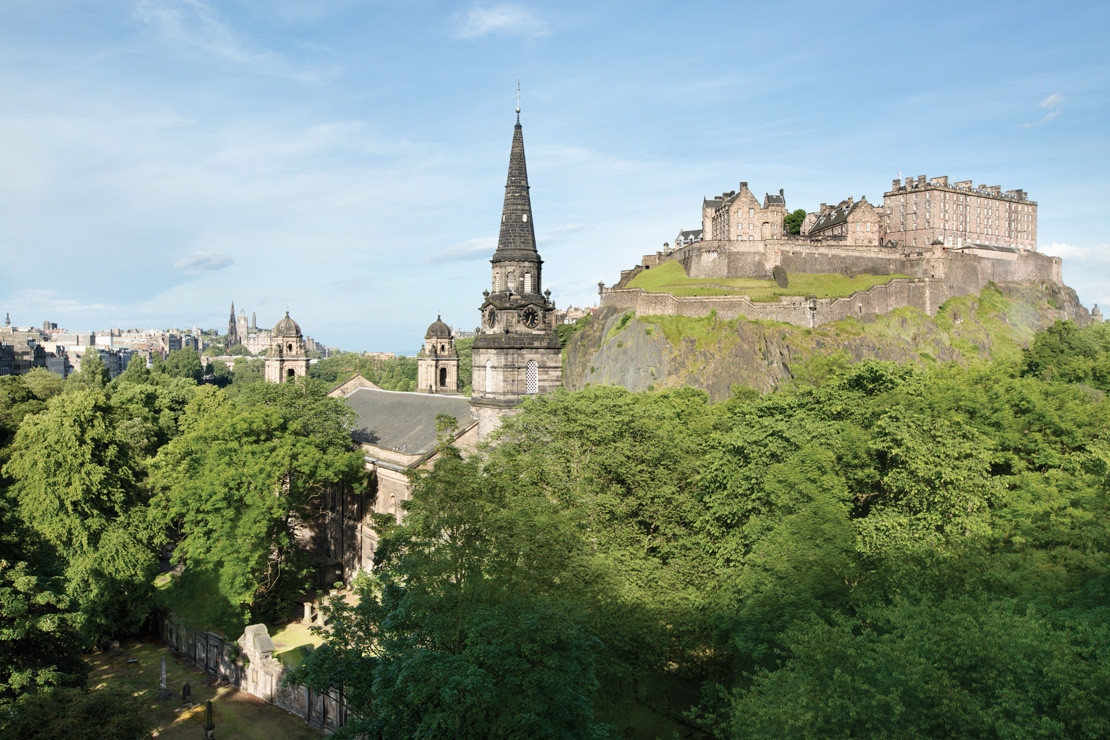
Edinburg Castle and its old city, a mystical place full of secrets, from a room with a view: my daily morning panorama.
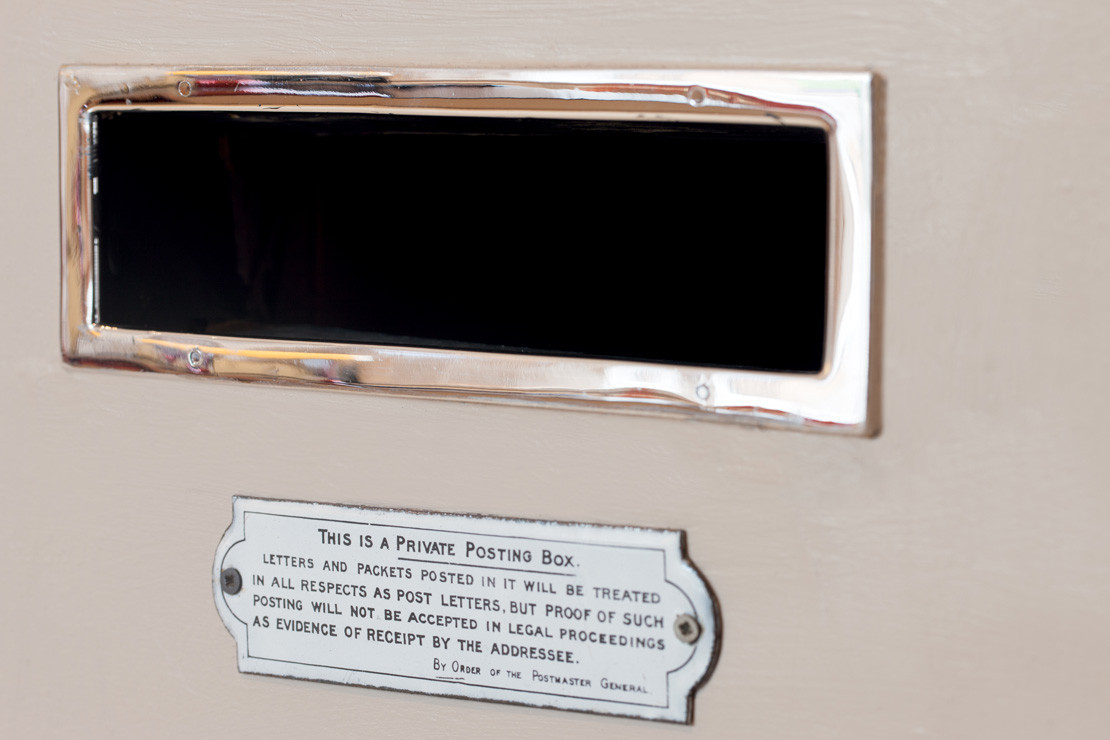
By Order of the Postmaster General — Private Posting Box at the hotel. As a matter of fact: letters will not be treated in all respects.
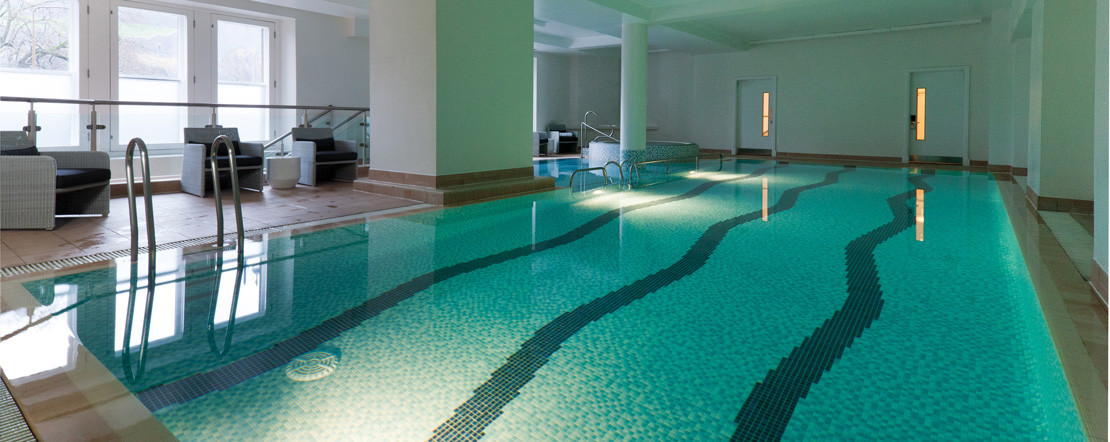
The Swimming Pool of the Caley.
My target lies a bit further into Princes Street Gardens. I am meeting Roddy Martine, my Scottish co-author, at Ross Fountain. Architect John Dick Peddie had originally intended the fountain for the forecourt of the Caledonian Railway station. The fountain, originally designed as a centrepiece for the Paris Exhibition of 1867, still carries the maker’s name – A Durenne, Maitre des Forges, Sommevocle, Haute Marne. After the exhibition, the statue was purchased by Daniel Ross, an Edinburgh gunsmith, who intended to present it to his native city. At considerable personal cost, Ross had it shipped in 122 pieces to Leith, but when the towering montage of scantily-clad and naked young women was unveiled before the members of Edinburgh Town Council, they were horrified. It was all too suggestive and French; the sight of naked women in a railway station was too much for their prudish Victorian worthies. So the fountain ended up here, at a safe distance from the hotel. A perfect vantage point to tell the story of Edinburgh’s famous landmark.
Andreas Augustin
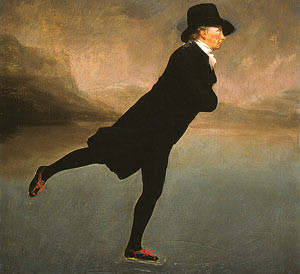
One of my favourite paintings in the world hangs at the National Gallery, a short walk away from the hotel: Sir Henry Raeburn (1756–1823): Reverend Robert Walker (1755–1808)
‘The Skating Minister’ Oil on canvas 30 x 25 inches. Owned by the National Gallery of Scotland, Edinburgh. Part of the tradition attached to the portrait is that the reverend Walker is skating on Duddingston Loch, which lies at the foot of Arthur’s Seat, a plug of a former volcano, which dominates Edinburgh, just to the east of the city centre.
Robert Walker was a member of the Royal Company of Archers in 1779 and their chaplain in 1798. This painting, virtually unknown prior to 1949, when it was purchased by the National Gallery of Scotland, has become one of the most famous paintings in the world and a symbol of the gallery.

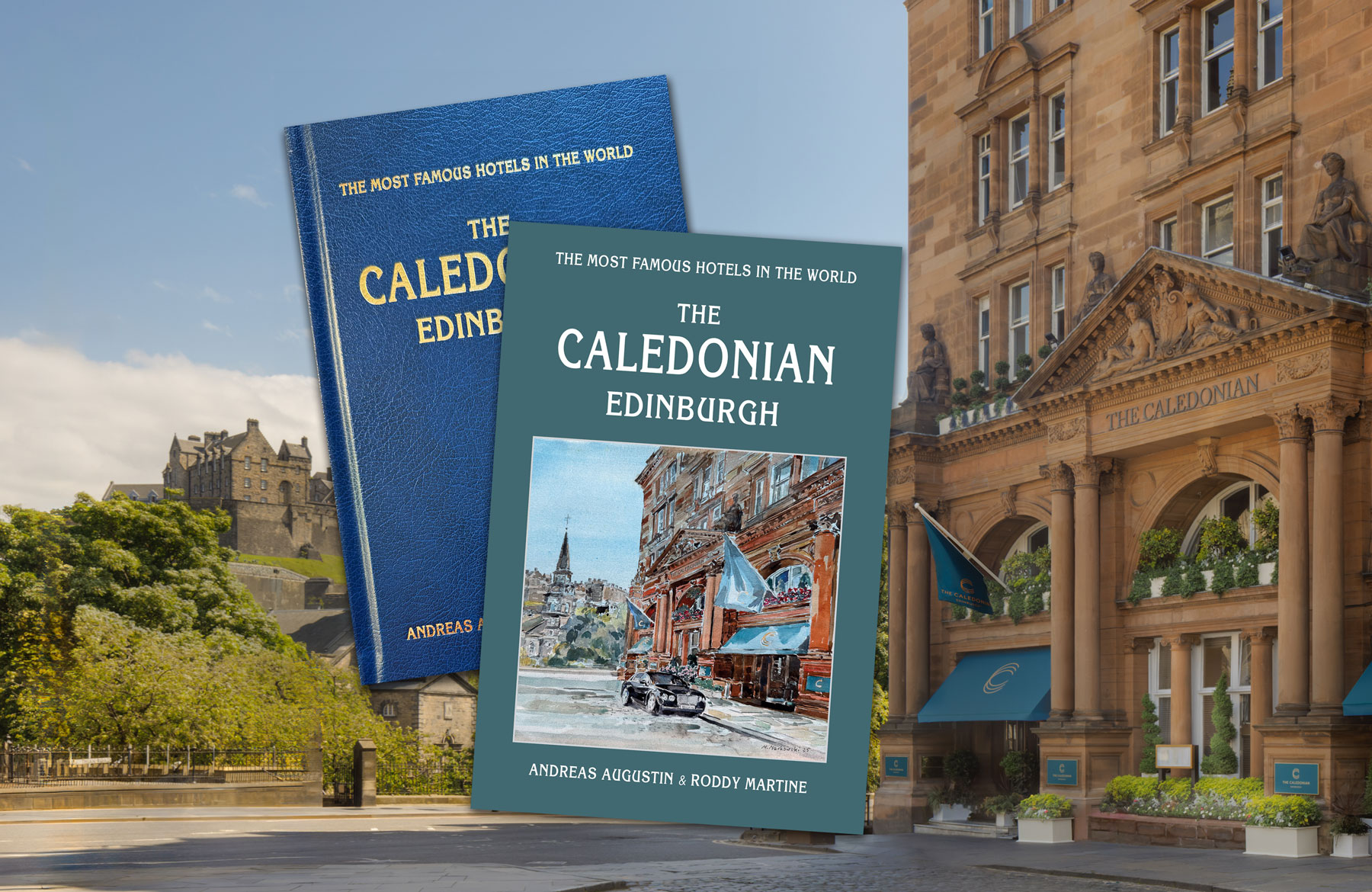
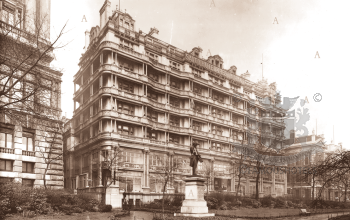
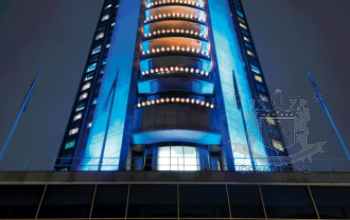


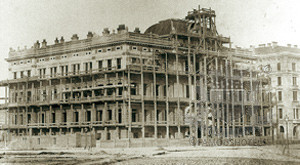


On 21 December 1903, the citizens of Edinburgh gasped at the unmistakable opulence of their new acquisition, a 205-bedroom hotel of distinction to rival any comparable establishment anywhere in the world. The Caley, which is overlooked by Edinburgh Castle, sits at the opposite end of Princes Street from the city's other grande dame, the Balmoral. The two hotels have been in competitio since the early 1900s, when they were owned by rival railway companies. The Caledonian Railway Company developed a system in which steam from trains at the adjoining station was recycled to heat the hotel's water supply.
1965: the Station closed, but the hotel remained.
2000: The hotel was acquired by Hilton.
2003: the book The Caledonain Edinburgh by Roddy Martine and Andreas Augustin appears.
2008: The Caledonian Hotel is to be sold for more than £50 million to a consortium of Israeli investors backed by the HBOS banking group (The Times). The new owners, who are retaining Hilton Hotels Corporation to run the hotel under a long-term contract, are expected to invest up to £15 million in upgrading the facilities and restore it to its former glory.
2018: Twenty14 Holdings (T14H), the hospitality investment arm of Lulu Group International, buys the hotel for $120 million.
William-Count-Basie
Aznavour Charles Bassey Shirley Blair Tony Burton Richard Chaplin Charles Chrétien Jean (PM of Canada) Clerides Clafcos (President of Cyprus) Como Perry Connery Sean Connolly Billy Count Basie William Crosby Bing Davis Bette Dietrich Marlene Evans Dale Fullerton Fiona Goh Chok Tong (PM of Singapore) Gorbachev Mikhail Hardy Oliver John Elton Kabbak Alhaji (President of Sierra Leone) King Hussein of Jordan King Mswati III (King of Swaziland) Lanza Mario
Laurel & Stan
Lee Kuan Yew MacMurray Fred Major John
Mandela Nelson
Marcos Imelda and Ferdinand Emmanuel
Menuhin Yehudi (with Roddey Martine, the co-author of the book THE CALEDONIAN EDINBURGH
Mkapa Beyama William(President of Tanzania) Naway Sharif Muhammed (PM of Pakistan) Niven David Nureyew Rudolph Patterson Percival J. (PM of Jamaica) Prince and Princess Michael of Kent
Prince Naruhito of Japan
Prince Tapuotoa (Min of foreign aff. of Tonga)
Princess Royal Anne
Quinn Anthony
Ramgoolan Navinchandra (PM of Mauritius)
Rogers Roy
Taylor Elizabeth
Caledonia - the name You are in the heart of Scotland - and that means quintessentially, that you have - from a Scottish perspective, landed at the cradle of the civilized world. Let me give you a series of good reasons (discovered while researching the book The Caledonian, Edinburgh, with my colleague Roddy Martine: Here we go: Scotland is basically everywhere; 61% of American Presidents have a Scottish ethnic background and inventions of Scots or people of Scottish origin have changed the course of history – from penicillin to television, the discovery of anaesthesia, the invention of the telephone and the theories of political economics.* An excerpt of the long list of Scottish inventors: James Napier (1550–1617) created logarithms. Adam Smith (1723–1790): theories of political economics. James Watt (1736–1819): separate condenser for steam engine. John Loudon McAdam (1756–1836): road surfaces. James Young Simpson (1811–1870): first use of chloroform. James Young (1811–1883) manufactured paraffin wax and founded the mineral oil industry. Kirkpatrick MacMillan (1813–1878): the bicycle. James Clerk Maxwell (1831–1879): electricity & magnetism. John Boyd Dunlop (1840–1921), a veterinary surgeon, invented the pneumatic tyre in 1889. Alexander Graham Bell (1847–1922): the telephone. Sir Alexander Fleming (1881–1955) discovered penicillin. John Logie Baird (1888–1946) pioneered television. Sir Robert Watson-Watt (1892–1973) developed radar. More recently, Scottish scientists involved in genetic research at the Roslin Institute on the outskirts of Edinburgh were responsible for cloning Dolly the Sheep. You see! Where would we be without the Scots? Although they comprise less than one-half of one percent of the world’s population, 11 percent of all Nobel prizes have been awarded to Scotsmen. ------------ Caledonia, used in general somewhat loosely to denote the northern portion of Britain during the period of the Roman occupation of the island, had originally a more restricted application. The word Caledonia is first met with in the fourth book of Pliny’s Historia Naturalis (ca 77AD), where, in the very meagre notice of Britain, the Caledonian forest (Caledonia sylva) is given as the northern boundary of the Roman part of the island. Its next appearance is in the Agricola of Tacitus (96AD) where Caledonia is unquestionably Britain north of the Firth of Forth. The etymology of the word Caledonia has been variously given. Celydd (in Welsh a woody shelter) is the popular derivation; but Isaac Taylor (Words and Places) thinks the word may possibly contain the root gael and if so, the Caledonians would be the Gaels of the duns or hills. Equally obscure are the ethnological relations of the people, the most probable opinion being that which regards as belonging to the British branch of the great Celtic family. A casual inference, hazarded by Tacitus (Agricola), that the red hair and large limbs of the inhabitants of Caledonia point clearly to a German origin, must not be pressed too far. Encyclopaedia Britannica, Ninth Edition, 1876 ---------------
Willy Blattner
Alfred Tuke
Dagmar Muehle
Dale MacPhee
Nitin Ramtri 2024–
215 Rooms
23 Suites
The Pompadour Restaurant ------ Carriages Restaurant and Bar (informal) ------ The Caledonian Lounge
At a hotel, that has been awarded a 5 Crowns Deluxe status by the Scottish Tourist Board, you certinaly find enough to do. Ask for a Castle view room, there are charming cosy suites on this side of the hotel. The larger rooms are on the inside (courtyard).